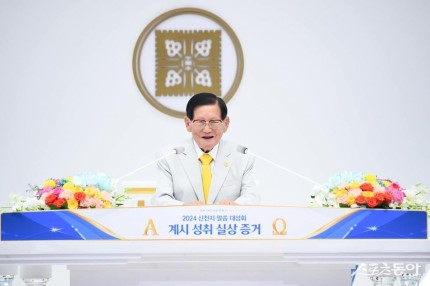Kenya’s Independent Electoral and Boundaries Commission (IEBC) is facing queries on its performance, even after implementing most of the directives from an earlier Supreme Court judgment that nullified the 2017 polls.
On Monday, the Commission declared Deputy President William Ruto as the president-elect. But his main challenger, Raila Odinga, has disputed the results, vowing to challenge them in court. Mr Odinga has until August 22 to sue.
So what did the IEBC do better this time? Kenyans are generally divided along political lines with those supporting Dr Ruto maintaining that the election was more transparent in the 2022 elections, while those supporting Raila Odinga argue that the IEBC repeated the anomalies and irregularities that led to the nullification of the presidential elections in 2017.
Read: African leaders congratulate William Ruto for winning Kenyan election
One of the key improvements in the 2022 elections is that the IEBC posted all the forms from 46,229 polling stations on the public portal that allowed access to any interested party.
According to Dismas Mokua, a political commentator, the process was transparent because IEBC had made Forms 34A—that contains the results of the 290 constituencies—public so that anybody who was interested in the results could do their own tallying.
It was a marked improvement from the 2017 elections when the IEBC refused to open the servers to verify the results even after being directed to do so by the Supreme Court. This was among the key reasons that the Supreme Court nullified the presidential elections in 2017.
Also read: Observer group’s parallel tally almost similar to IEBC results
The Supreme Court ruled that the 2017 election was not conducted in accordance with the Constitution and therefore was invalid.
Led by former Chief Justice David Maraga, the court had cited irregularities and illegalities were serious procedural errors that threatened the foundation of Kenyan democracy. It found that IEBC was not transparent and did not employ the electronic transmission methods as required by the law.
A good number of the Kenya Integrated Electoral Management System (KIEMS) Kits had failed and instead depended on text messages and pictures of forms that had been manually filled out to obtain information.
The 2017 declaration of results was rushed and that is why the court argued that IEBC disregarded a large portion of the legislation governing it and made the tallying process troublesome. Despite declaring the results on August 11, 2017, the IEBC was still pleading with Kenyans to be patient as it attempted to make the forms available to them for verification as of August 14, 2017.
Read: EAC observers laud Kenya for successful use of technology in election
In 2017, the KIEMS kits did not just fail on the election day, but the commissioners thereafter resisted attempts to have the manner in which the kits were procured revealed to the public. Parliament later forced IEBC to reveal that the kits were acquired from the French company Idemia, formerly OT-Morpho.
This time, the IEBC announced that 200 of the Kenya Integrated Electoral Management System (KIEMS) Kits failed out of the total of the 46,229 polling stations across the country, forcing the electoral body to resort to the manual register.
The other marked difference in the 2022 elections was that there were very few network challenges as opposed to 2017.
In June, IEBC announced that it had acquired satellite modems for areas with no 3G network to enable the transmission of results electronically. In the 2022 elections, a total of 1,111polling stations did not have a 3G or 4G network and IEBC had to deploy satellite modems to facilitate the electronic transmission of results.
But just like in 2017, the 2022 election has again raised disputes over the tallying and verification of the presidential results.
Mr Odinga will be basing his petition on grounds that IEBC Chairman Wafula Chebukati compiled the final presidential results—Form 34C—unilaterally without involving other commissioners for verification.
Read: Observers voice concern over multiplicity of Kenya electoral laws
Mr Chebukati had on August 15 declared the former Deputy President, Dr William Ruto of the Kenya Kwanza coalition, the winner with 50.49 percent against his competitor Mr Odinga, who garnered 48.8 percent. Mr Chebukati announced that Dr Ruto had garnered 7,176,141 votes against Mr Odinga’s 6,942,930.
In 2022, most polling stations opened on time, but there were a few which opened late for various reasons including late setting up of the station, late arrival of polling materials or polling officials. Some Forms 34A did not have signatures of agents and others had the figures altered from the turnout in the KIEMS kit. However, these challenges were less widespread compared to 2017.
In 2022, just like in the previous election, there was tension over the tallying and announcement of the presidential results. However, unlike in 2017 where there was election-related violence, this year, there were only a few isolated pockets of unrest immediately after the poll results were announced and relative calm settled over the country after that.
Bobby Mkangi, who was a member of the Committee of Experts that drafted the 2010 constitution, said that the challenge in holding credible elections is because of political interference and not because of lack of institutions and systems.
Mr Mkangi said that as a committee, they presented the views and values of Kenyans that came out of the Kriegler Commission that investigated the 2007/08 post-election violence, and that Kenyans had expected the elections to be better run than what they had been in 2007.
“Yes, we have had contested elections after the promulgation of the 2010 constitution, but the dispute resolution mechanism in the form of the judiciary has worked well for us. The remaining challenge is the political heat that comes with the elections that has refused to subside and which is interfering with the election processes,” said Mr Mkangi.
Another big challenge in the 2022 elections was that the elections of Governor in two counties—Kakamega and Mombasa—was suspended because the ballot papers had errors, including wrong pictures for the candidates and details.
Read: Kenya election: Officials assure country of security
Another key difference in the 2022 elections was that various observer missions released their preliminary report before the results were announced. In the previous Kenyan elections, observers were criticised for releasing their reports too late, sometimes a year after the elections.
Observer missions from Africa; the East African Community (EAC), AU-COMESSA and the Inter-Governmental Authority on Development (Igad) Election Observer Mission, all released their preliminary reports jointly on August 11.
The EAC Election Observation Mission said that they were satisfied by the manner in which the voting exercise was conducted. The Head of Mission, former Tanzanian president Jakaya Kikwete, lauded the IEBC for the improvements made in regards to transparency, preparations, and management.
“The Mission commends the IEBC on the successful use of technology in voter registration, voter identification and transmission of results. It has improved efficiency, and increased transparency of the election process,” said Mr Kikwete.
The Igad Election Observer Mission noted that overall, the IEBC’s preparation was visibly strong and its election management performance by all measures was commendable. For example, they noted the functionality and robust nature of technology to manage voter verification and transmission of results has been an area of concern in previous elections.
“In this election, voter verification and transmission of results and use of the KIEMS kit has largely been effective,” said the Igad Mission.




















Discussion about this post